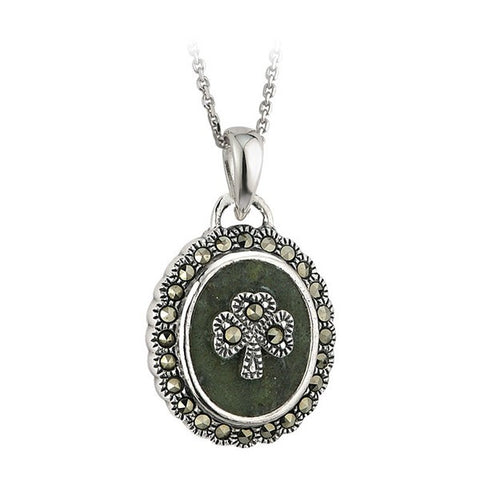
Irish Symbols – The Irish Shamrock
The shamrock is the national flower of Ireland. It is a small plant made up of 3 heart-shape leaves (take note of the number three, this is important)!
The significance of the number three in Ireland dates all the way back to Pagan times.
The Celts believed that everything important came in threes; the three dominions of the planet (the earth, the sky and the sea), the phases of the moon (half-moon, full moon, total eclipse), the three ages of man (birth, life and death) and of course the 3 colours of our national flag, the tricolour (green, white and gold).
In Celtic folklore, the shamrock was also a charm against evil and is said to bring the bearer good luck. So be sure to carry one whenever you play the lottery or attend one of your favourite team’s sporting occasions!
Many believed that the shamrock also possessed mystical powers such as predicting the weather. If bad weather was on the way, it’s leaves are said to turn up towards the sky. If you have been lucky enough to have already visited our fair isle, we can only presume that the shamrock’s leaves spend the majority of their time upturned!

The patron saint of Ireland, St. Patrick
When St. Patrick, the patron saint of Ireland set out to convert the Celtic inhabitants of Ireland (the Druids) to Christianity, he would have been fully aware of their fondness for the number three and, according to legend, he used the shamrock to illustrate the Christian concept of the Trinity i.e. to show how one God divided into three: God the Father, God the Son, and God the Holy Spirit.
The use of the Irish Shamrock on Irish Celtic Jewellery.
With the importance of the Irish Shamrock to Irish Heritage and History it would seem only fitting that some of the most beautiful handcrafted pieces of Irish Celtic history hold the Shamrock as a centre piece to deliver that distinctive Irish authentic look. Below is a classic Pendant Necklace with the true identity of the Irish Shamrock featured in it.

Today in celebration of this, people wear the Irish Shamrock on their lapel on March 17th for St. Patrick’s Day, the national Irish holiday.

St. Patrick’s Day is not only celebrated here in Ireland, but all across the world with great festivities. While the Irish Shamrock is widely known to be synonymous with Ireland and is indeed our national flower, it is not in fact the official symbol of Ireland. That lofty status is held by the 12-stringed harp which you will notice on the back of all our coins (we’ll explore the harp symbol in our next blog)!

President Obama being gifted a bowl of Irish Shamrocks by the Irish Taoiseach Enda Kenny
Traditionally every St. Patrick’s Day, the Irish Taoiseach (our Prime Minister) gives a bowl of Irish Shamrocks to the President of the United States as a symbol of our long standing relationship with our cousins across the Atlantic.
Even to this day, a member of the British Royal Family presents Irish Shamrocks to the Irish Guards regiment, as a sign of appreciation and recognition for their services.

An Aerlingus aeroplane displays the shamrock symbol on it’s tail-fin
If you keep an eye out, you will see the Shamrock on many buildings, businesses and even sporting team’s emblems. The Irish Shamrock can be seen on the tail-fins of planes belonging to Irish airline Aerlingus and is the logo of the Irish Tourist Board, Failte Ireland. Even those abroad celebrating their Irish heritage use the shamrock with pride, from the well-known sporting franchises such as the Boston Celtics and Notre Dame University to bars and businesses the world over.

The symbol of the three-leaf clover does however receive some legal protection. Under the Trade Marks Act 1996, the use of the emblem in Ireland is restricted to goods or services of Irish origin and only the Minister of Trade, Enterprise and Initiative can approve applications to use it.
So, whether it is for luck or sentiment or simply you just like the look of it, keeping shamrock close will mean you will always keep Ireland close.
Comments will be approved before showing up.

A century has passed since Ireland’s monumental 1916 Easter Uprising took place on the streets of Dublin.
Expertise from author and Irish military historian Paul O’Brien, and Dr Joanna Brück, a reader in archeaology at University of Bristol and former senior lecturer at UCD’s School of Archaeology, shows the physical scars left by the 1916 Rising in Dublin - the hub of the rebellion.

We recently had a new hand carved wooden sign made for the shop. It was made by Ritchie Clarke from Mullingar Co. Westmeath.
Read some more about Richie and the reason behind the sign.
Natasha Sturdy
Author